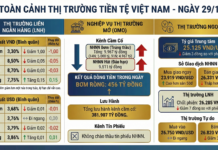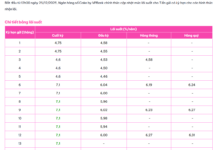
Heavy industry is an import-dependent sector in the period 2016-2022, growing strongly by about 22%, higher than the national average of about 7%. Photo: HÙNG LÊ |
The Keynes – Leontief relationship argues that an increase in demand factors will stimulate production, and then spread to income. The demand factors (intermediate demand and final demand) will include both domestic products and imported products.
The OECD proposal on this issue provides a quantitative method for valuing value added in trade. The concept of this issue was introduced by Robert Kopman and associates (2008) in their research on China in the study article “How much of China’s exports are actually produced in China?”.
In the context of the Vietnamese economy, the question is how the spread from the ultimate demand factors (including final consumption, investment, and exports) to the value of production and especially the value added?
In fact, the impact from the demand side in the short term depends on the supply capacity of the economy: If the supply capacity is limited or weak, increasing the total final demand for any reason basically only increases prices and imports, and actual income will not change much. Conversely, if the supply potential is abundant and improved, the increase in total final demand will actually increase output and income.
|
If the supply capacity is limited or weak, increasing the total final demand for any reason basically only increases prices and imports, and actual income will not change much. Conversely, if the supply potential is abundant and improved, the increase in total final demand will actually increase output and income. |
When considering and proposing stimulus policies, it is necessary to understand that the Keynes – Leontief relationship not only quantifies the impact of final demand on output, but also quantifies the impact of final demand on the total value added of the economy. Using the Leontief system to calculate the relationship of final demand with the value of production, income, and imports to see the spread from the domestic final demand to the supply side will be an important basis for the above policy proposals.
About final consumption: Assuming that the input-output table in 2012 represents the period 2010-2015 and the input-output table in 2019 represents the period 2016-2022. Calculation from the input-output model shows that the spread effect from final consumption on the value of production has decreased significantly (by 14.1%), and income has also decreased by 20.4 percentage points between the two periods (2010-2015 and 2016-2022).
About investment: The calculation shows that the spread of investment to the value of production has also decreased significantly (by 17.1%), but the spread rate to the increase in value added is only about 5.6% in the two periods. Especially:
– Investment from the FDI sector has the lowest spread to domestic income;
– Investment from the state sector in the period 2016-2022 reduced the value of production and income slightly compared to the period 2010-2015;
– Private investment increased both the value of production and income in the period 2016-2022 compared to the period 2010-2015.
About exports: In the period 2016-2022, exports spread strongly to the value of production (11.7%), but the spread to the value added decreased (by 13.3%) compared to the period 2010-2015; however, exports have a strong impact on imports (comparing between the two periods, it increased by 52%). This confirms that current exports are basically raw exports, resources, and processing products, but they are the cause of the strong trade deficit in the domestic economic region.
Notably, exports from the FDI sector are spreading less and less to income and value added. In the period 2010-2015, for every 100 dong of exports from this sector, it spread to an additional value of 28 dong, while in the period 2016-2022, exports from this sector only spread to an additional value of 18 dong.
Furthermore, in the period 2010-2015, every 100 dong of exports from this sector only spread to the income of domestic workers by 20 dong, while in the period 2016-2022, 100 dong of exports from this sector only spread to the income of domestic workers by 15 dong.
|
Calculation from the input-output model shows that the spread effect from final consumption on the value of production has decreased significantly (-14.1%), and income has also decreased by 20.4 percentage points between the two periods (2010-2015 and 2016-2022). |
About imports: The calculation results show that the demand for imports generated in the period 2016-2022 seems to be relatively higher than in previous periods. Most notably, consuming one unit of imported finished products in this period spreads to 2,204 units of imports. The accumulated sum of products, whether produced domestically or imported, has the greatest impact on imports (1,639 units of imports needed for each unit of accumulated domestically produced products).
It can be seen from the input-output table calculations that the production of certain sectors such as other consumer goods, industrial materials, heavy industry, and construction has spread significantly to the increased import demand in recent years.
For example, in the heavy industry sector, which is an import-dependent industry, the total direct and indirect import demand of this sector in the period 2010-2015 is 1,488 (0.343 + 1.145) units per unit of final demand, and it has increased to 1,822 (0.463 + 1.359) units in the period 2016-2022, increasing by about 22%, higher than the national average of about 7%. In the period 2016-2022 compared to the period 2010-2022, direct import demand increased by 35% and indirect import demand increased by 19%.
Therefore, it can be seen that managing demand in the current Vietnamese economy requires careful consideration with the risks of inflation, increasing trade deficit of the domestic economic region, and imbalanced economic structure. The best way to restore balance to the economy is to minimize costs for businesses and individuals, reduce taxes, fees, and various types of surplus.
Bui Trinh




































